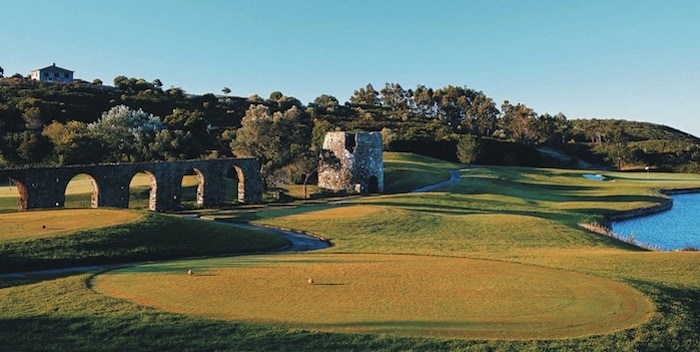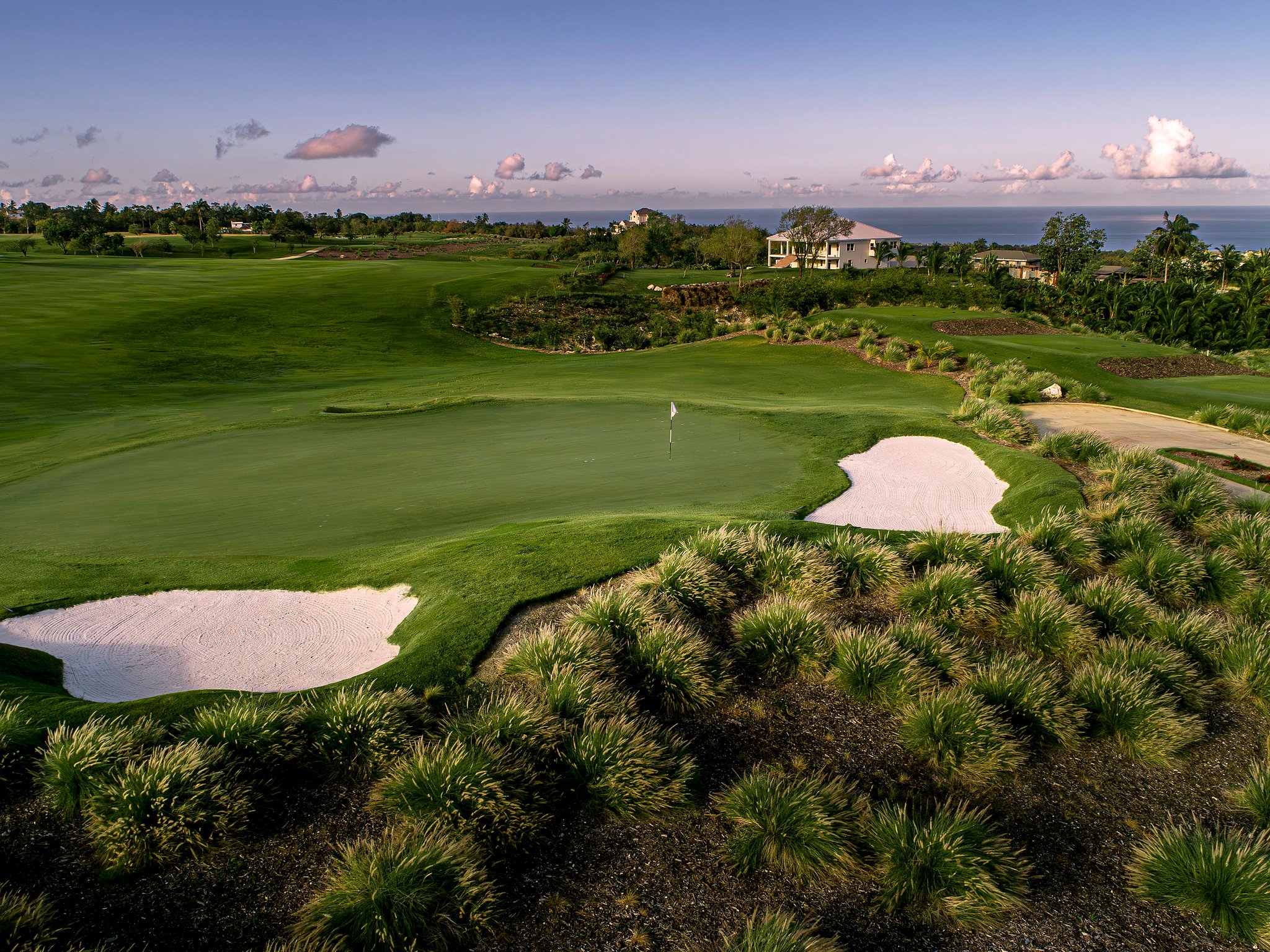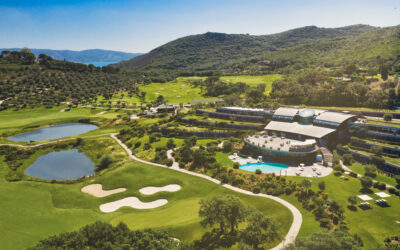Since you’re well educated, you probably already know that Lisbon is the oldest city in Western Europe and predates others such as London, Paris and Rome by several hundred years. And no doubt you are aware that it’s the seventh most visited city in Europe and enjoys the highest winter temperatures of any European capital.
Okay, here’s a direct question: In which year did Lisbon suffer a catastrophic earthquake that rocked the city, destroyed thousands of buildings and killed tens of thousands of people? The answer, of course, is 1755. So why didn’t you know that? May I suggest it’s because, despite having been to Portugal, you’ve only ever flown to Faro and, while you may be extremely familiar with the Algarve, know all the best restaurants in Albufeira and feel just as much at home on the E1 as you do on the M25, you’ve never properly explored Lisbon, which is a shame because it’s really rather lovely and, since you’re obviously interested, boasts over 20 quality golf courses in the immediate vicinity.
Vasco da Gama
Before we set off in search of them, let’s first take a quick look around Lisbon. If it was a golf course and not the capital of Portugal, you would need to take a buggy because it’s seriously steep with no fewer than seven major hills. If you don’t fancy strolling up and down the cobbled streets, there’s an excellent underground system or you can hop on a bright yellow tram. Although tiring, walking brings its own rewards and the chance to appreciate some magnificent architecture, glorious cityscapes and delightful views over the River Tagus which drifts past the city on its way to the Atlantic. Somewhere down there Vasco da Gama moored his ship.
Only after you’ve taken in all the Christian cathedrals and Moorish castles you can cope with and have had your fill of a truly fascinating city, should your mind begin to contemplate the appealing prospect of a round or two of golf. However, if you really can’t wait to hit balls, there’s a facility inside the city where you can limber up and work on that high draw.
Owned by two charming sisters, Paco do Lumiar is a sweet nine-holer squeezed between highways and high rise buildings on the north side of town. With seven par threes and just a couple of short par fours, it’s a great place to loosen up and worth a visit if only for the fun of hitting floating range balls into a lake and watching a boat chug round picking them up. And if you feel in need of a quick lesson before tackling tougher tracks, this is the place.
Okay, it’s decision time. Should you head west along the coast to the popular playgrounds of Estoril and Cascais or south over the river to parts of Portugal we Brits rarely visit?
Idiosyncratic
Let’s play safe and start with the more familiar and follow the river downstream a few miles to its mouth. Just past the pretty seaside town of Cascais lies the popular resort of Quinta da Marinha with its Robert Trent Jones (Sr) course. Built in the early 1980s, the layout has been tweaked a few times to accommodate the homes and hotel that have sprung up around it.
Although property rarely adds to the visual appeal of a course, one happy consequence of the changes is a rather idiosyncratic hole sequence. There are only two par fours and no fewer than five par fives in the first 11 holes which, if nothing else, is somewhat novel. Less attractive, however, are the several places where you have to cross over a fairway to reach the next tee. Timing is an important element in golf and it’s vital to get it right at these crossovers if you’re to avoid being hit.
The numerous umbrella pines punish anything off line and there’s a big tree on the third that, if there were such a thing, could make out a convincing claim to being the ‘signature’ tree. It was the subject of a disagreement between the owner and Robert Trent Jones’s then assistant, Cabell Robinson. The latter wanted it felled whereas the former preferred that it be left. RTJ intervened and applied the ‘Golden Rule’ which states, “The one who has the gold makes the rules.”
Contemporary Architecture
Right next door to Quinta da Marinha is another resort, Oitavos. If you’re coming by boat from Lisbon, it’s just past the eighth lighthouse on the starboard side – hence the name – about 17.378 nautical miles from the city centre. Both the stunning contemporary hotel and the magnificent adjoining course ooze class and quality. Together, in my opinion, they comprise the finest golf resort in the whole of Portugal.
If I knew anything about contemporary architecture, I would now give you a detailed description of the hotel. I’m not and so I won’t but I can tell you it has five-stars, 142 rooms and is exceptionally comfortable. However, it’s nowhere near as appealing as the adjacent Oitavos Dunes course. Whether it’s a genuine links in the strictest sense is a matter of debate but what is indisputable is that it’s extraordinarily beautiful and a joy to play.
Despite only having been created as recently as the beginning of this century, it has already hosted the European Tour on four occasions between 2005 and 2009 when the Estoril Portuguese Open was staged here. Occupying a wonderfully open, exposed and elevated site, it combines the exhilarating thrill of a breezy cliff-top track with the subtlety, finesse and springy turf of a lovely links.
Lands End
Very few trees have managed to grip on to the wind-blown sandy ridges that ripple down to the shore but there are plenty of bushes and enough serious rough to concentrate the mind. There are also environmentally sensitive areas where golfers must reluctantly abandon even the newest of balls in the name of conservation.
The course also offers stunning views up to the mountains and breath-taking panoramas out over the Atlantic. One of the rocky outcrops just to the north is the most westerly point on mainland Europe. Cabo da Roca is the Portuguese equivalent of Lands End and is worth a visit if only to admire the vertical 100-metre drop into the crashing waves below.
Drive a dozen miles inland from here through the rather wild and beautiful Sintra-Cascais National Park and on its eastern edge you’ll find our next challenge, Penha Longa. If you’ve time and fancy another Moorish castle, you should stop off and explore the hilltop town of Sintra on the way.
Eucalyptus
Penha Longa is a top-notch resort that has something of the feel of an English country estate, only warmer [pictured in header of this article]. The course is a cracker. Designed by Robert Trent Jones Jr, it makes great use of the considerable height it enjoys with some impressively elevated tees, sweeping fairways and splendid views. Olive, cork and eucalyptus trees help provide definition and water plays its part in creating a rich and lovely landscape. About 7000 yards off the tips, it has hosted the Portuguese Open and rightfully deserves its high ranking among the very best courses on the continent.
About 20 miles to the north-east lies Belas Club de Campo. Here I made indisputably the biggest mistake of the whole trip. A proud and sometimes stubborn man, I abhor buggies and so ignored the advice of the pro and opted to walk. Although the holes were mostly downhill, the walks from green to tee most certainly weren’t. Neither were they short. Consequently, 18 holes even on a comparatively cool day was every bit as challenging as the course itself. Several pretty ponds and lovely lakes enriched the visual appeal of a course that is blessed with an abundance of elevation.
Okay, it’s time to cross the mighty River Tagus to explore the area to the south of Lisbon. There’s a choice of two bridges. Both are rather impressive. The Vasco da Gama Bridge, which is the more easterly and upstream of the pair, stretches for nearly 11 miles and is the longest bridge in Europe. But we’re taking the 25th of April Bridge, which is nearer the mouth of the river. When it was inaugurated back in August 1966, it was the longest suspension bridge in Europe. If it opened in August why, you might wonder, is it called ‘25th of April’? Actually, it was christened Ponte Salazar but was later re-named to commemorate the Carnation Revolution of 1974 when the dictatorship that governed Portugal ended comparatively peacefully.
Golden Beaches
As you cross you can’t help but notice an impressive, Rio de Janeiro-style, arms wide open, statue of Christ on the left-hand side. Built seven years before the bridge, it’s as tall as a short par three and attracts plenty of pilgrims and tourists.
Now we’re on what Lisbonites refer to as ‘the other side’ or ‘south bank’. Although rather less vibrant perhaps than the north bank, it nevertheless has some glorious beaches and, more importantly, a handful of quality courses. Turn right shortly after leaving the bridge and you’ll soon find Aroeira Golf Club, which has two of them unimaginatively named ‘1’ and ‘2’.
Set within a gated community with dozens of smart holiday homes, several tennis courts, a swimming pool and, one day maybe, a hotel, they are blissfully walkable, pretty parkland courses. Aroeira 1 was designed by Frank Pennink and hosted the Portuguese Open back in ‘96 and ’97. The only disappointment is that, although both courses are no more than 600 yards from the ocean, neither affords not even the slightest glimpse of the sea, which is hidden behind a massive sandy hill. Still drained from the previous day’s hike around Belas, I couldn’t quite summon up the energy to clamber over it and thus missed out on the golden beaches of the Costa de Caparica.
Jose Mourinho
Aroeira is one of half-a-dozen golf developments in the Lisbon area that got into difficulties during the recent economic downturn and was taken over by a company called Orizonte. They are in the process of improving the condition of both 1 and 2, which will certainly enhance their appeal.
Another one in the Orizonte portfolio is Quinta do Peru Golf and Country Club, which is roughly ten miles south-east of Aroeira and about half-way to the port of Setubal. (Setubal was once the centre of Portugal’s flourishing sardine industry but is nowadays probably more famous as the birthplace of Jose Mourinho). One day Quinta do Peru might be equally well-known as the club where Pedro Figueiredo used to play. The 22-year-old made an impressive debut earlier this year by finishing joint-eighth at the Red Sea Egyptian Classic and then came third at the Red Sea Ain Sokhna Classic. Could he be the superstar golfer Portugal craves?
His home course – the most recent to be constructed on the Costa Azul – was designed by Rocky Roquemore and opened 20 years ago. A former Challenge Tour venue, this beautifully presented, pretty parkland course enjoys lovely views up to the Arrábida Hills, is pleasantly spacious and weaves gently around several lakes and between impressive pines.
Set-aside half a day to wander around Setubal and look out for dolphins splashing around the estuary before tackling our final challenge, Clube Golfe do Montado. Just a couple miles to the east of the city, it was designed by a Portuguese course architect called Duarte Sottomayor and completely revamped and renovated about eight years ago. An eminently walkable course, it cuts pleasantly through vineyards and circles lakes before reaching a watery climax with an island green par three at the last. The final tee-shot is not one you would want to mess up as between them, the clubhouse terrace and hotel balconies provide rather too many in the way of spectators.
Why We Like It
Lisbon is a beautiful and vibrant capital full of glorious buildings. The mighty River Tagus adds a maritime dimension and considerably enhances the overall visual appeal of this historic port. Scattered around the city, particularly to the north, are some outstanding courses that are a lot less expensive than the equivalent in the Algarve.
 Golf writer Clive Agran, 65 and a journalist for more than 40 years, Clive Agran still wonders what he’ll do when he grows up. Nicknamed ‘Silky Swing’, he travels the globe looking for the world’s best golf courses.
Golf writer Clive Agran, 65 and a journalist for more than 40 years, Clive Agran still wonders what he’ll do when he grows up. Nicknamed ‘Silky Swing’, he travels the globe looking for the world’s best golf courses.








 0
0









